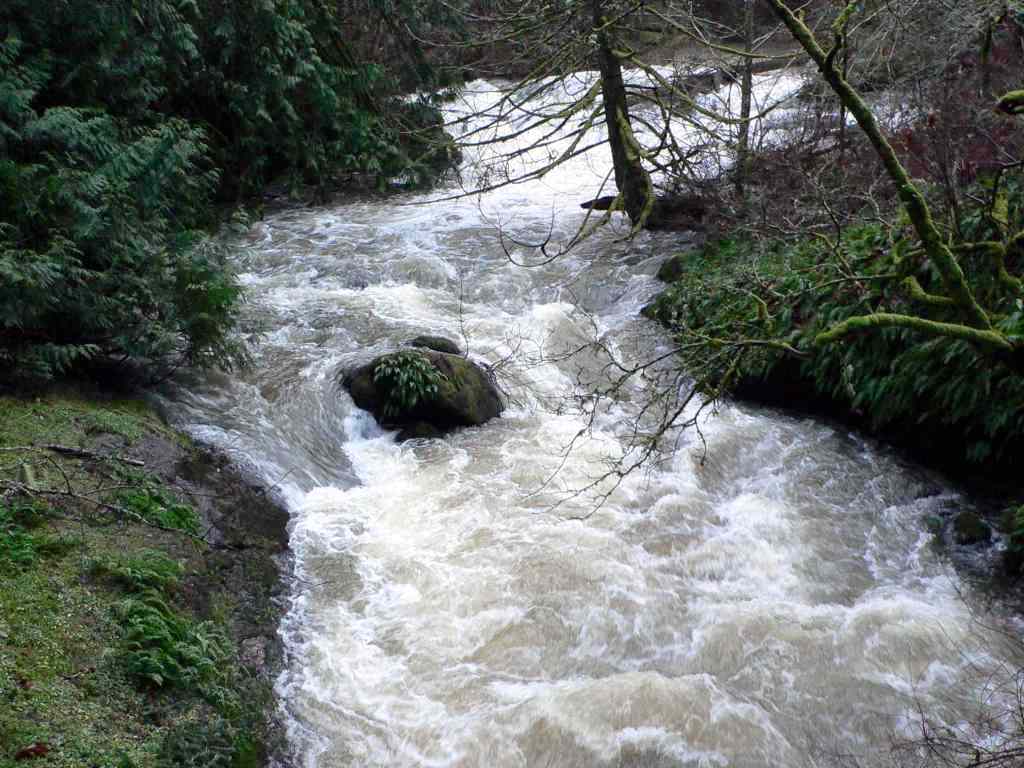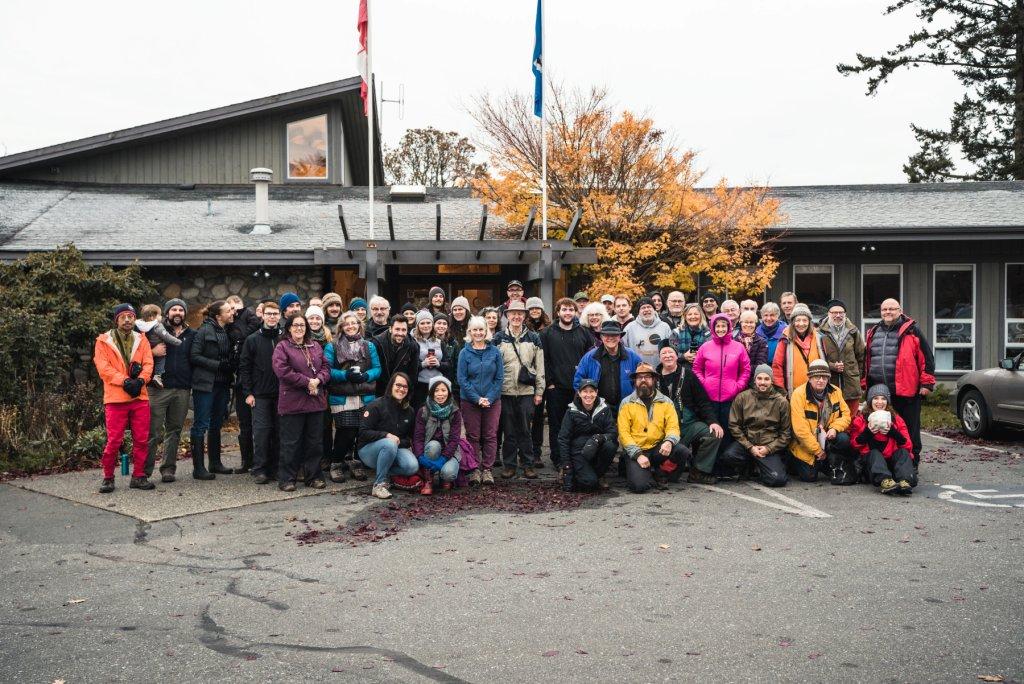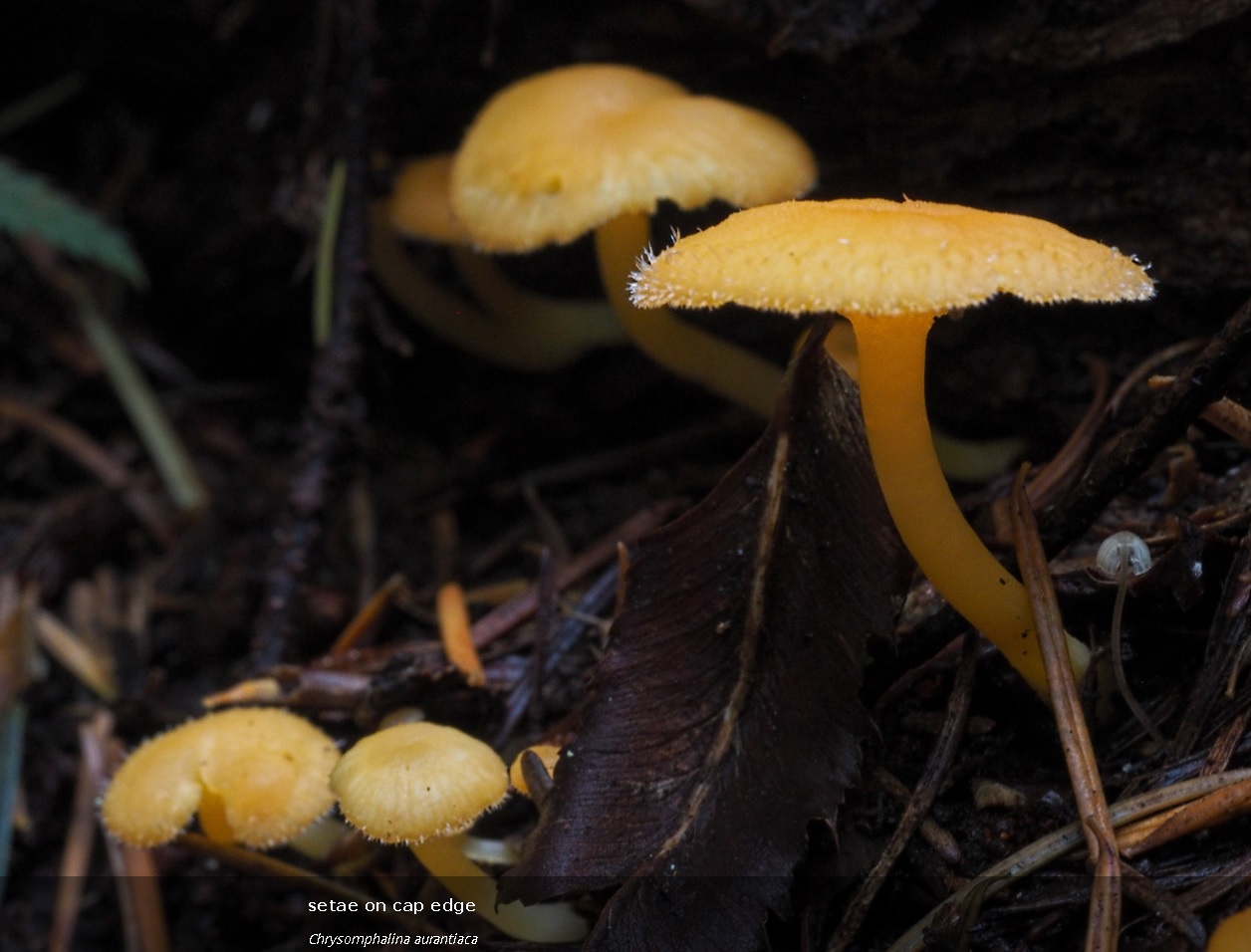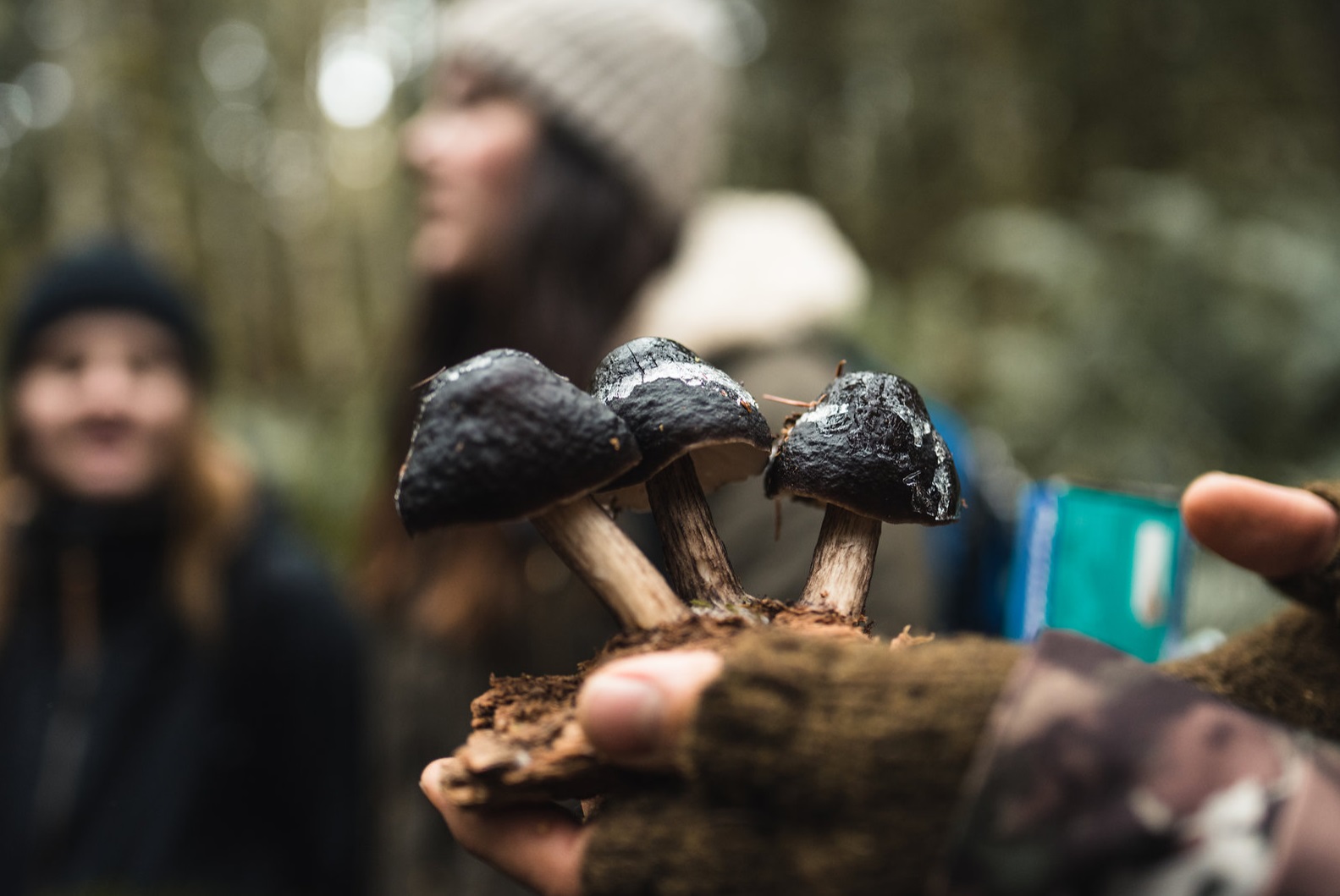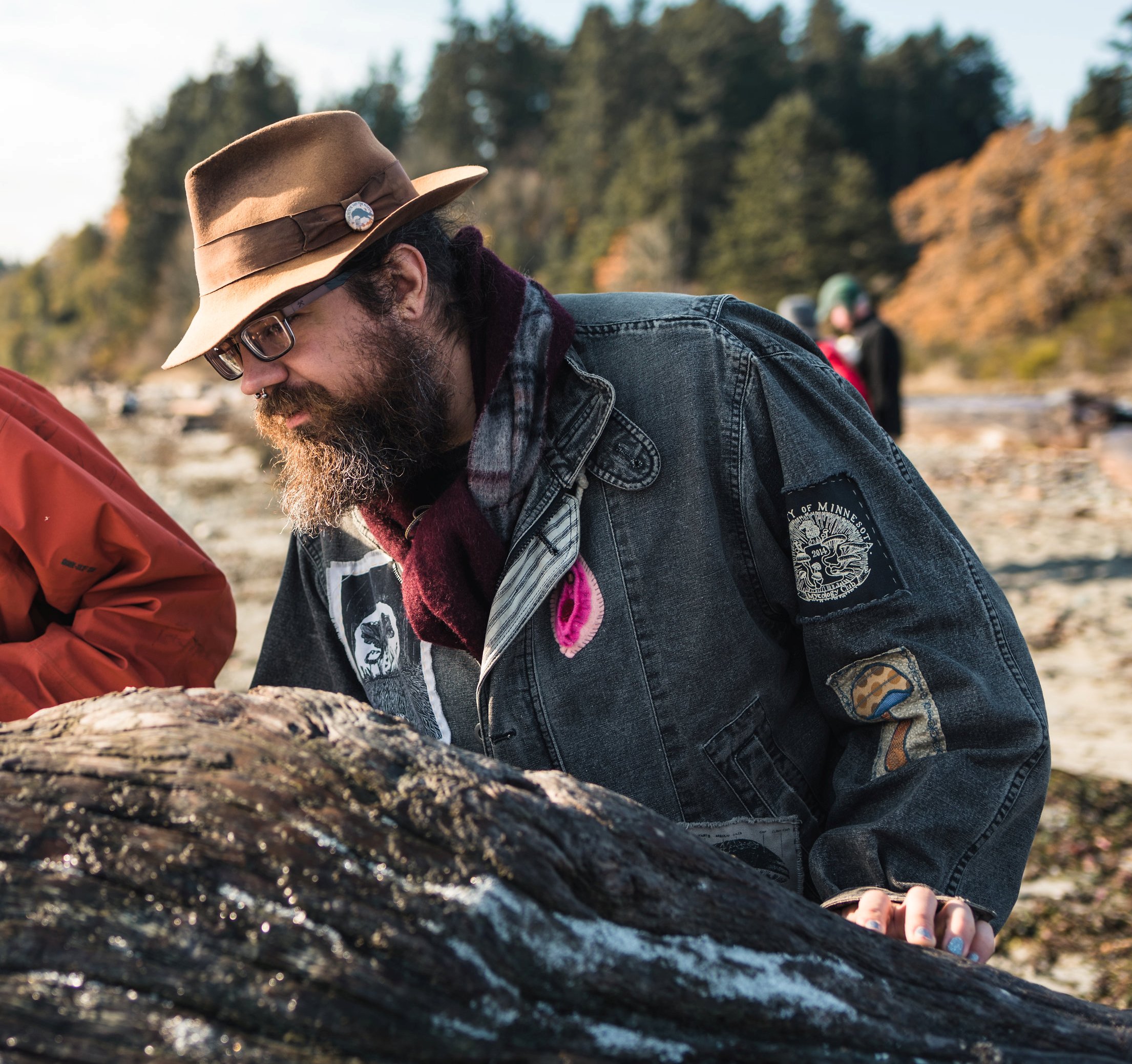
|
| The black spots on this
Tower Point lungwort lichen look, at first glance, as though they might be
reproductive structures of the lichen. In fact, the spots are a fungus (Plectocarpon lichenum) living on the lichen.
Photo by Kem Luther.(Click for larger version.) |
|
|
Ryan Batten, Hans Roemer,
and Kem
Luther, along with Jenifer Penny and Marta Donovan from
the Conservation Data Centre, visited Tower Point at
Witty's Lagoon CRD Park on March 7, 2017, to check out
the lichens.
|
|
Alas, the weather at Tower Point was not very cooperative. The group of
researchers,
confronted
by a stinging salt spray and crashing waves, struggled
to stay warm and dry enough to enjoy the lichens. They did
find a number of interesting lichens, however, and one
fungus that is a symbiont on
lichens (pictured above) The fungus was a new addition
to the Metchosin BioBlitz database.
|
|
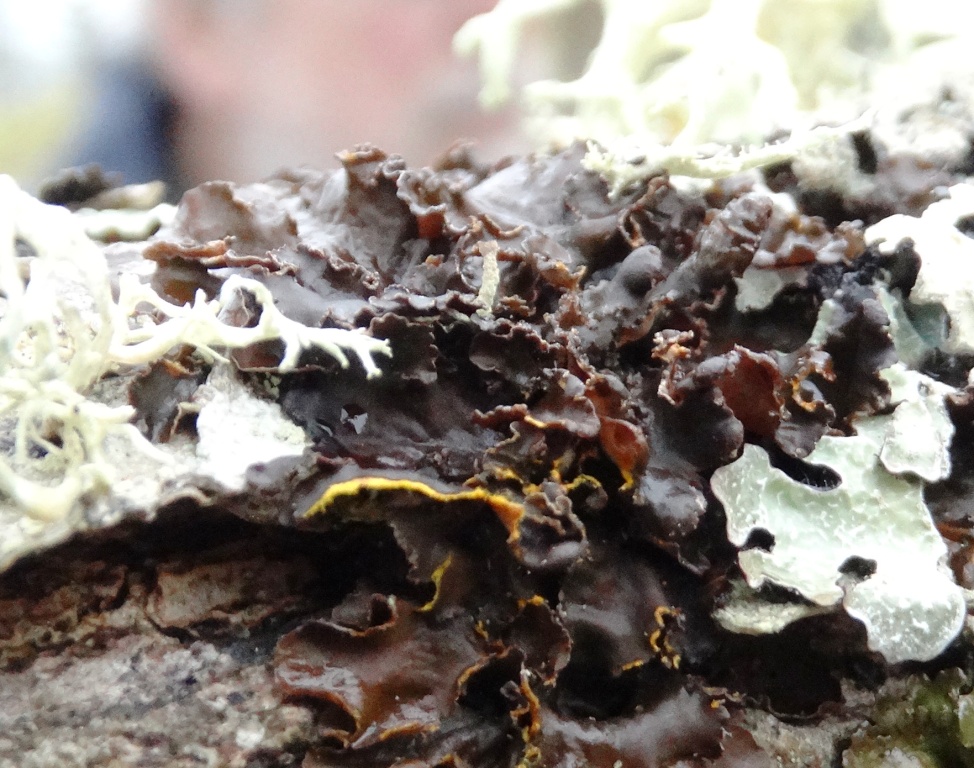
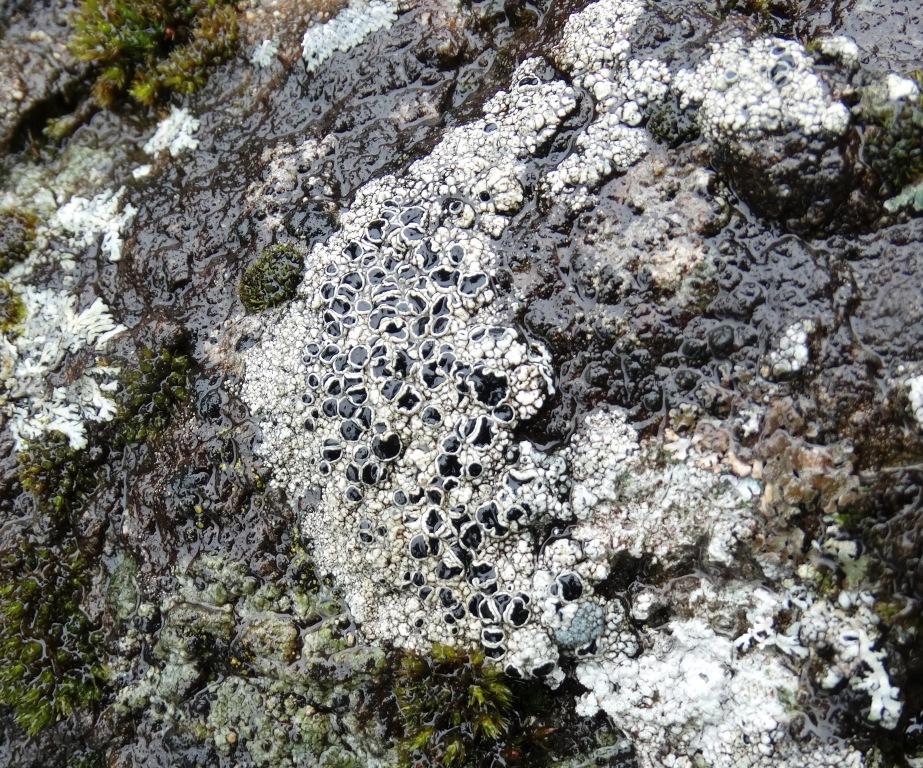
|
| Two
lichens from Devonian. The one at the top is
Nephroma laevigatum, Mustard Kidney Lichen.
It is easy to identify because it is the only
Nephroma whose medulla (inner layer) is a bright
yellow. The other is the common but stunning crustose rock
lichen, Tephromela atra (black-eye
lichen). Photos by Kem Luther (Click for larger versions.) |
|

|
| Ryan Batten
(light blue coat) shows some tree-based lichens to the members of the
Devonian walk and talk group. Photo by Moralea
Milne. (Click for a larger version.) |
|
|
The experience at the Tower Point site convinced the
group to take the
participants from the talk and walk coming up later in
the week to Devonian Park. On Saturday, March 11, 2017,
a
group of about 15 people accompanied Ryan on this walk.
|
|
The two lichen forays to Tower Point and to Devonian added four new lichens to the BioBlitz
inventory, bringing the total to 294. The new ones were Melanelia olivacea
(Spotted Camouflage Lichen),
Punctelia jeckeri (Speckled Shield Lichen), Leptogium gelatinosum (Petaled Vinyl),
and
Menegazzia terebrata (Tree Flute Lichen).
One moss and one fungus were
also added.
|
|
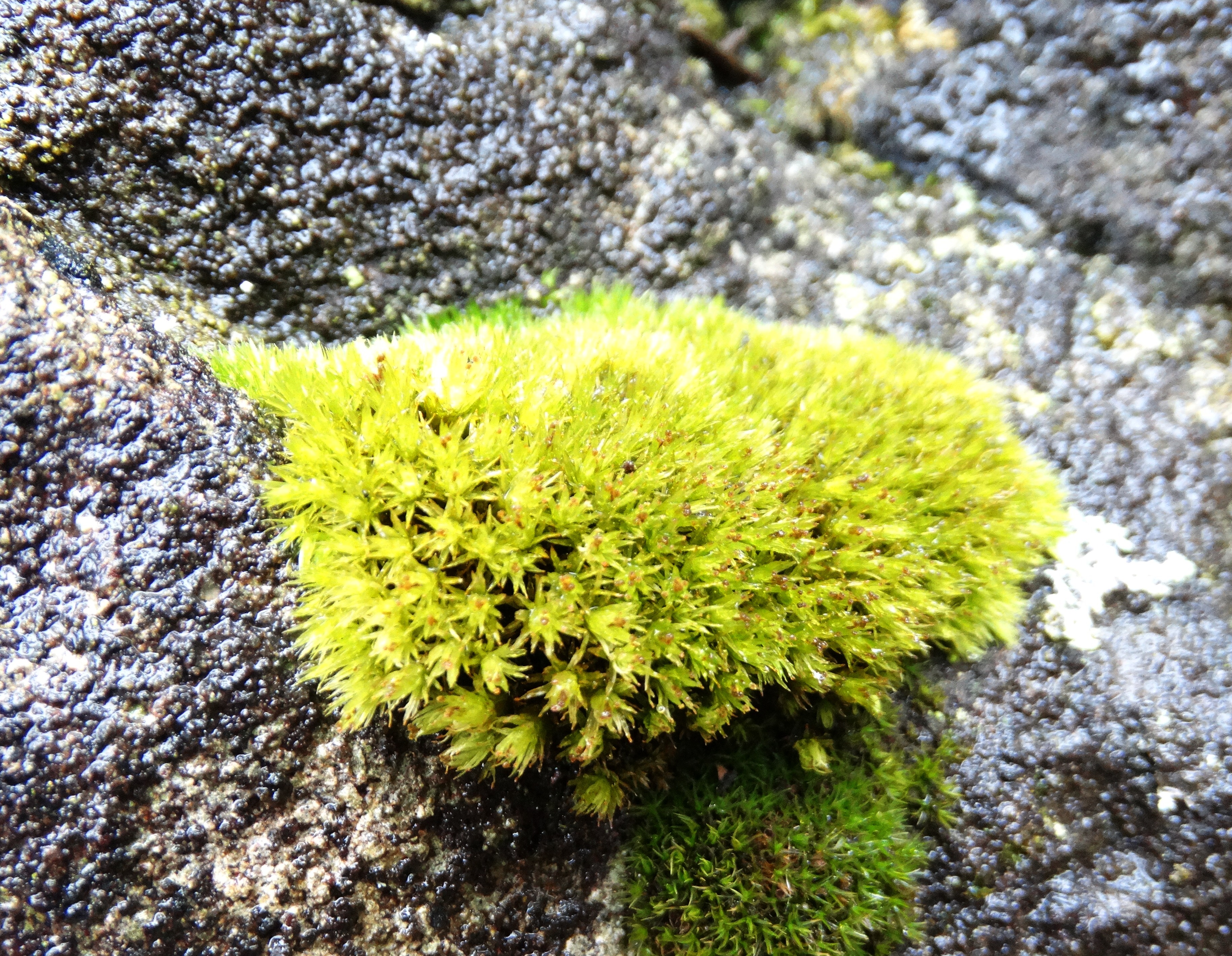
|
| While
scanning the Devonian Park rocks for interesting
lichens, Ryan came across a moss that isn't seen
much around Metchosin. This is Ulota phyllantha,
an urn moss that is characterized by numerous
gemmae (small cell clusters that can grow into
new mosses) clinging to the tops of the moss
stems. Photo by Kem Luther. (Click for larger versions.) |
|
|
SVIMS Mushroom Foray at Pearson, March 4, 2017

|
| The SVIMS group gathers at Pearson at 10:00 am, March 4, 2017, to organize
the upcoming foray. Photo by James Hollko (Click for larger version.) |
|
|
On March 4, 2017, around 35 SVIMS members joined
Puget Sound Mycological Society's Danny Miller and
Vancouver Mycological Society member Brooke Fochuk for a
foray in the Pearson College woods.
|
|
Also present at this 2017 foray were four nonhuman mushroom hunters--truffle dogs. The dogs have been
specially trained to seek out underground mushrooms and point out the locations to their
human controllers--a job usually done in previous centuries by truffle pigs. Many of the underground mushrooms in
Metchosin are inedible, but a few are choice, including the Oregon White Truffle and Oregon Black Truffle. For further
information on BC Truffles, see
this article
by SVIMS member Shannon Berch. At the Pearson event, the
dogs failed to find any truffles (except the ones
explicitly planted to show the dogs' ability), but everyone
enjoyed watching the truffle dogs do their work.
|
|
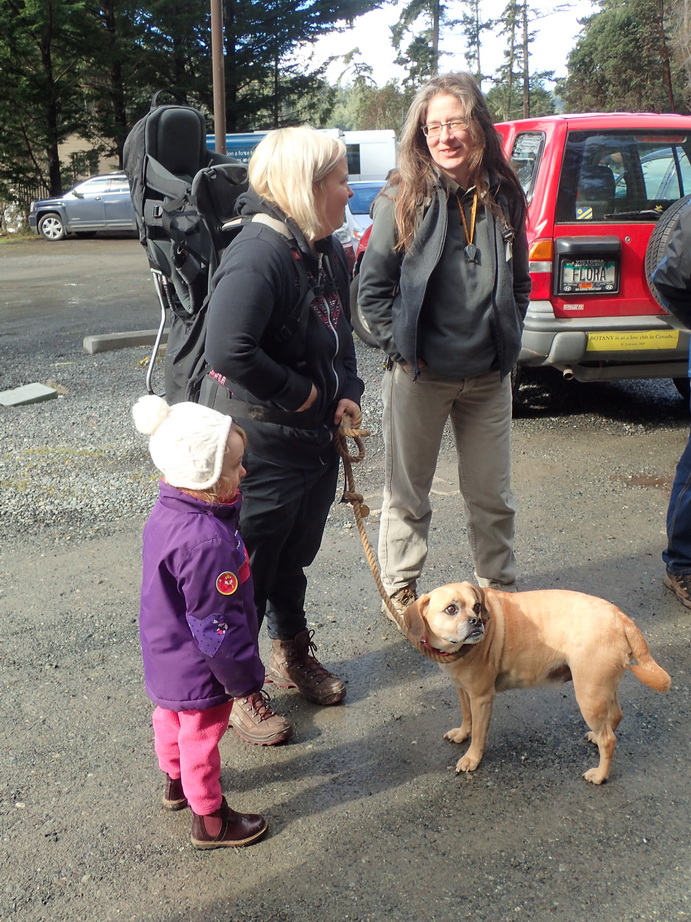
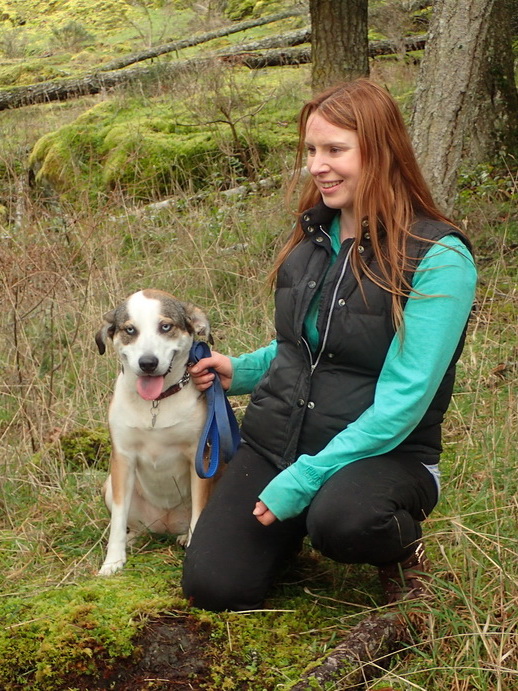
|
| Brooke Fochuk
with her truffle dog Dexter (top) talks to
Juliet Pendray. Larissa and her truffle dog
Della (bottom).
Photos by Adolf Ceska (Click for larger versions.) |
|
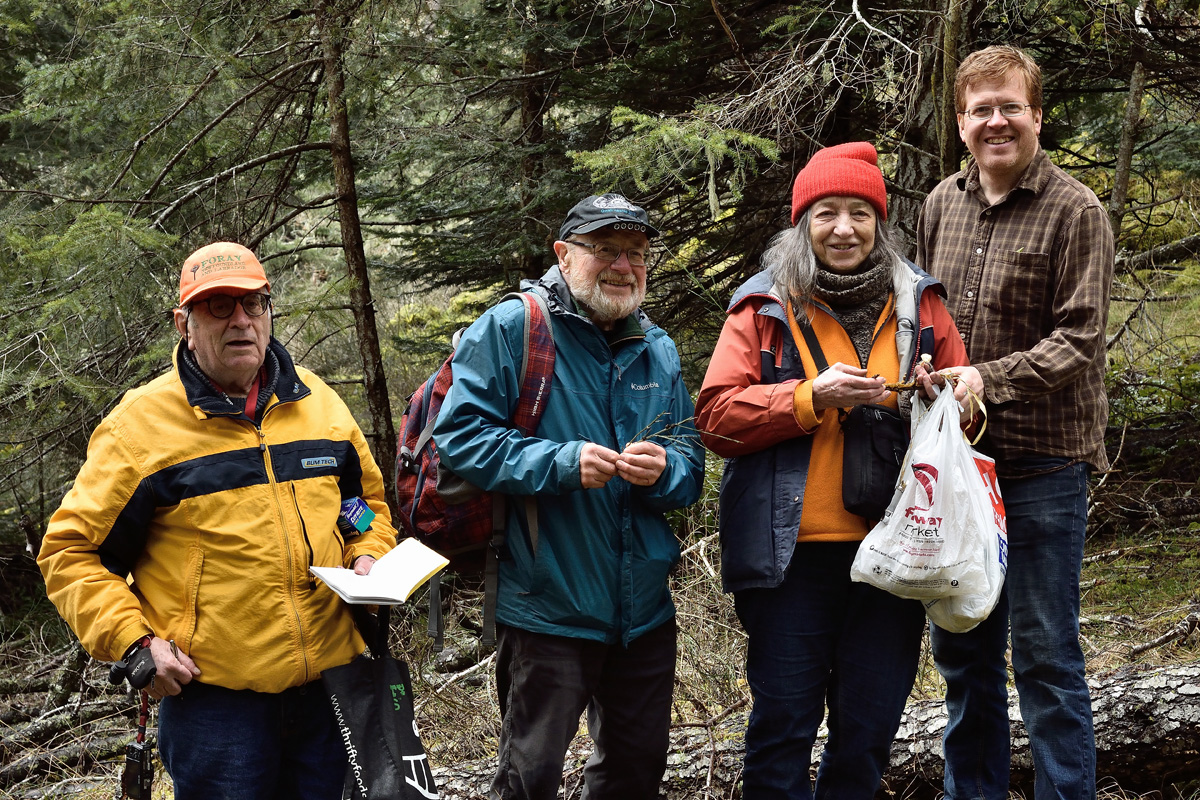
|
| Some leaders of the SVIMS foray. Left to right, Adolf Ceska, Bryce Kendrick, Oluna
Ceska, Danny Miller. Danny Miller is the Education Chair of the Puget Sound Mycological Society.
Photo by James Hollko (Click for larger version.) |
|
|
Several foray leaders, including Metchosin's own Andy MacKinnon, helped the attendees
identify the mushrooms. Adolf and Oluna Ceska and Bryce Kendrick later compiled a list
of 45 different mushroom species found during the day.
|
|
The 45 species were entered into the Metchosin BioBlitz database. A dozen of the sightings
were completely new to the database. They were
Arrhenia epichysium, Cladobotryum mycophilum, Coniophora puteana,
Galerina dimorphocystis, Gloeophyllum sepiarium,
Helvella maculata, Hypocrea sp., Leptodontidium elatius/trabinellum,
Mycena parabolica, Penicillium sp., Propolis leonis,
and Sarea resinae.
|
|
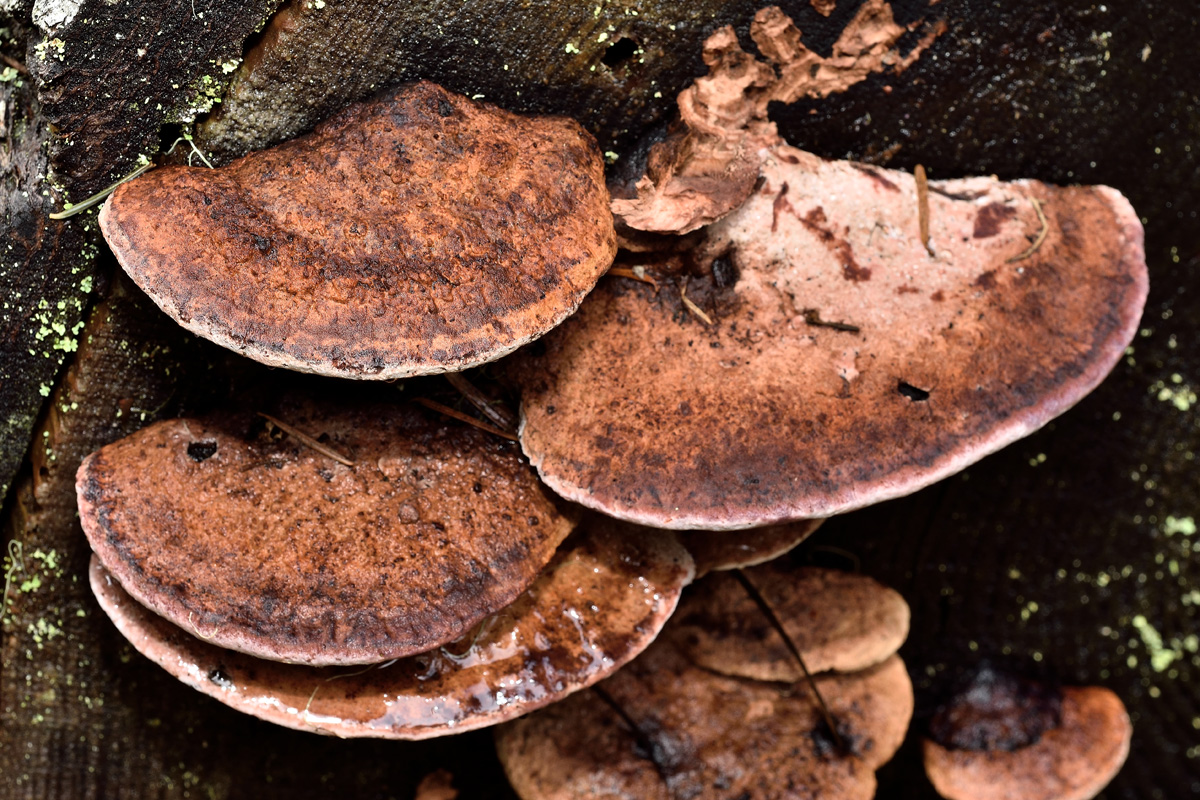
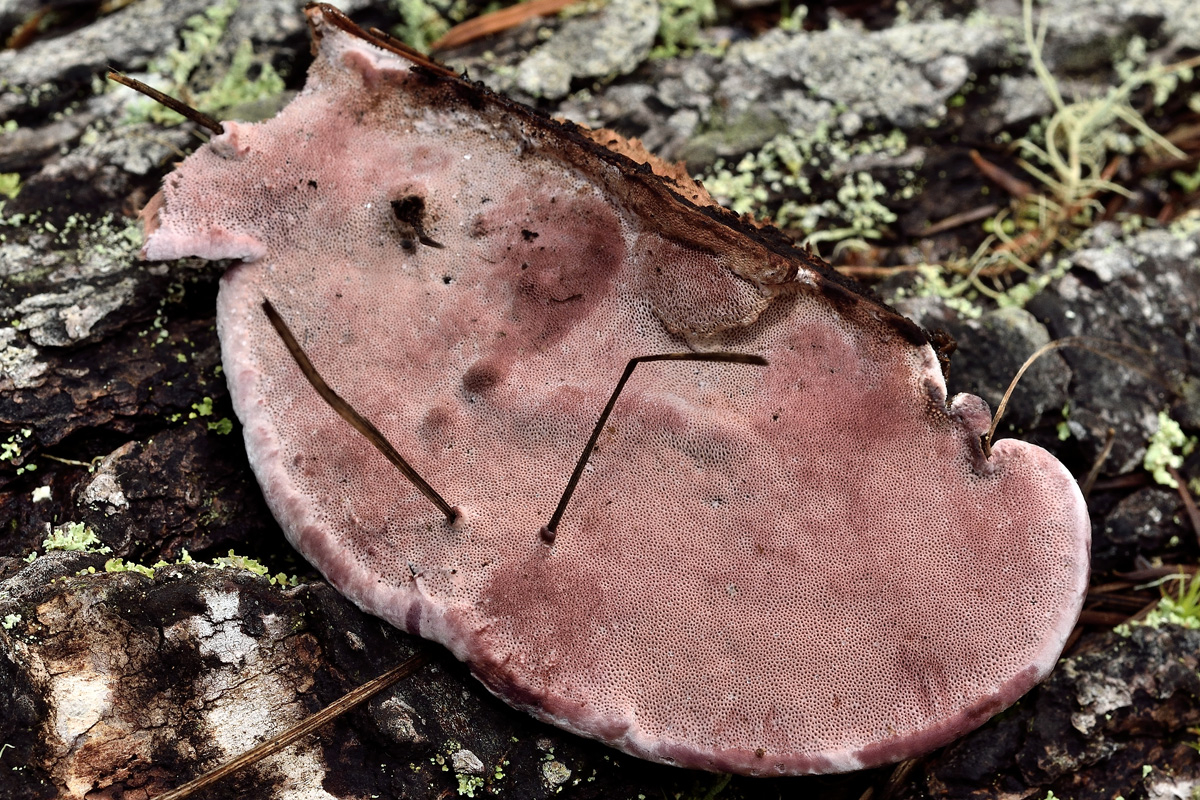
|
| A beauty discovered at the 2017 SVIMS Pearson College foray--Fomitopsis
cajanderi, the Rosy Conk. Top and bottom
shown. Photos by James Hollko. (Click for larger versions.) |
|
|
|
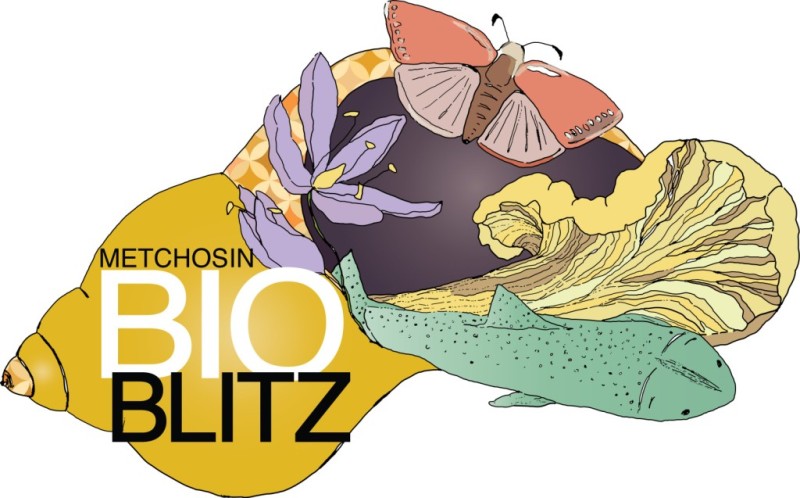
|
|
Artwork by Gala Milne
|
|
|
|
|
|
| |
